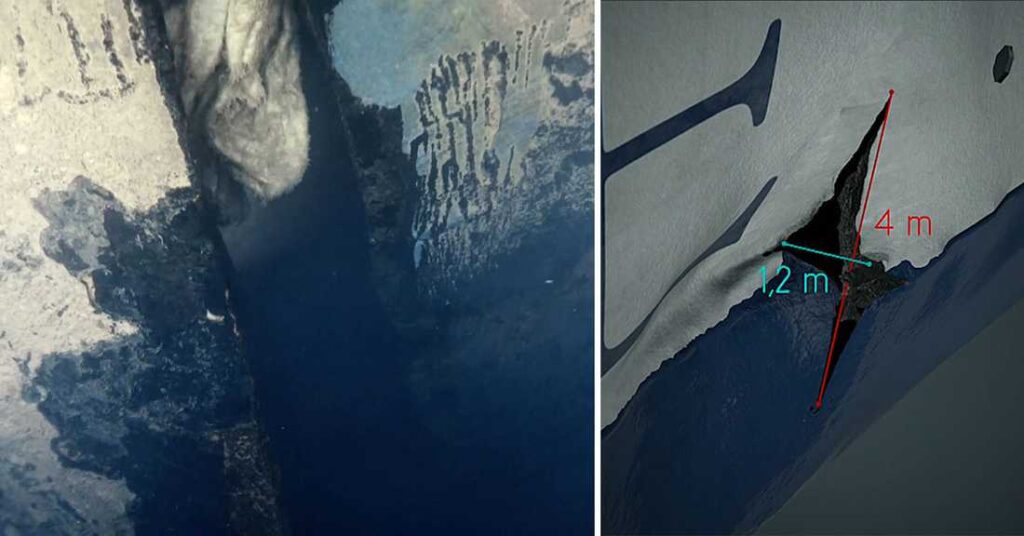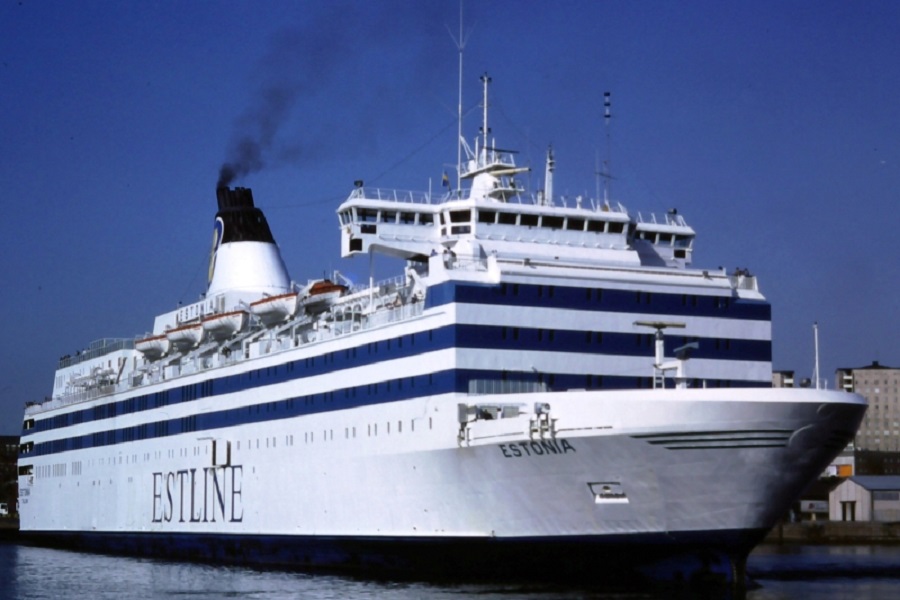A new documentary that premieres on a Swedish TV channel shows that the wreck of the sunken cruise ferry, MS Estonia, has a large hole in the hull; the finding is serious enough for the Estonian government to announce a new “technical investigation” into the disaster.
MS Estonia, a 16,000-ton cruise ferry that began serving the Tallinn-Stockholm route in 1993 and was operated by the Swedish-Estonian shipping company, Estline, was the largest ship sailing under the Estonian flag at the time. In fact, the elegant white and blue coloured ferry was seen as one of the symbols of newly found confidence of the young republic that had just regained independence, three year prior.
But in the morning of 28 September, the entire country of Estonia woke up in shock to the news that MS Estonia had sunk in the early hours. For Estonians, it was their very own “Kennedy moment” – everyone who was alive at the time, remembers where they were and what they were doing upon hearing the news.
The ship sank in the Baltic Sea while on a scheduled crossing, en route from Tallinn to Stockholm, where she had been expected in the morning. MS Estonia disappeared from the radar screens of other ships at around 01:50 EEST in international waters, about 22 nautical miles (41 kilometres) from the Finnish island of Utö. The ferry sank to the depth of 74 to 85 metres (243 to 279 ft) of water.
What made it headline news around the world was the huge loss of life. Of the 989 on board, only 138 were rescued alive (one of whom died later in hospital). As such, it is the second-deadliest peacetime sinking of a European ship, after the RMS Titanic, and the deadliest peacetime shipwreck to have occurred in European waters, with 852 lives lost. Most of the victims were Swedes (501), followed by Estonians (285).
While the weather at the sea was rough at the time of the disaster – with strong winds and waves of four to six metres (13 to 20 ft) – the ferry was supposedly built to handle the conditions. Esa Mäkela, the captain of Silja Europa – a passenger ferry that first answered to MS Estonia’s Mayday call and subsequently led the on-scene rescue effort – later described the weather as a typical autumn storm in the Baltic Sea.
The official report
The official disaster report said the fatal event started when the locks on the ferry’s bow door failed from the strain of the waves and the door separated from the rest of the vessel, pulling the ramp behind it ajar. This allowed water into the vehicle deck, capsizing, and ultimately sinking the ship.
As always with big disasters, conspiracy theories that questioned the official report, followed – from an explosion onboard the ferry to a collision with an unidentified submarine. Most of the conspiracy theories focus on the loud bangs many survivors heard approximately half an hour to an hour before MS Estonia sank – and the fact that the ship sank so quickly (in about half an hour), arguing that the ferry of that type should have remained afloat even after capsising.
In subsequent years, the lobby groups representing the victims’ families have on several occasions demanded a new investigation. So far, the Estonian, Swedish and Finnish governments have turned a deaf ear, prompting accusations they lack transparency when it comes to MS Estonia. In 1995, a treaty was agreed by Sweden, Finland, Estonia, Latvia, Poland, Denmark, Russia and the United Kingdom, declaring sanctity over the disaster site, prohibiting their citizens from even approaching the wreck of MS Estonia.
A huge hole in the hull
The treaty is, however, only binding for citizens of the countries that are signatories. That has allowed divers and documentary makers from other countries to conduct private investigations – and a new documentary that premieres in Sweden on 28 September, is causing a biggest stir to the official report yet.
A team led by the Swedish author and journalist, Henrik Evertsson (who, as a Swedish citizen, is now facing an investigation in his country for violating the sanctity of the disaster site), used remotely operated underwater robots and divers from a Norwegian company, Rockwater, to examine and videotape the wreck for the documentary. Their footage revealed four metres high and 1,2 metres wide hole in the ferry’s hull, on the starboard side – that until now, has never been mentioned or documented.

Writing about the documentary, the Swedish newspaper Aftonbladet said the hole was previously partially hidden in the seabed.
According to the released footage, it is not clear whether the hole appeared before or after the ferry sank. Some experts have already ruled out an explosion, but others say it could have been caused by a collision. Jorgen Amdahl, a professor of marine technology at the Norwegian University of Science and Technology, said in the documentary that “it is not ruled out the damage played a big role in the sinking”.
Estonia announces a new investigation
The revealing is so upsetting that, for the first time over the years, the Estonian, Swedish and Finnish governments take it seriously. Last week, the Estonian prime minister, Jüri Ratas, and foreign minister, Urmas Reinsalu, flew to Helsinki and Stockholm, to discuss the matter with their counterparts.
On 28 September, Ratas and Reinsalu gave a press conference in Tallinn where they announced that “a new technical investigation” must be carried out. The prime minister said the “technical investigation”, led by Estonia, should include underwater observations and that the Finnish and Swedish governments have been “informed”.
Cover: MS Estonia.

